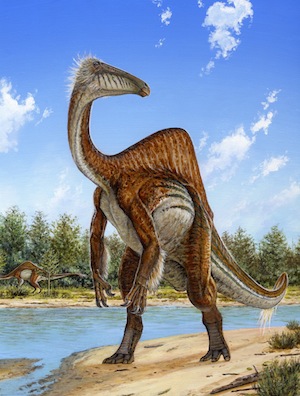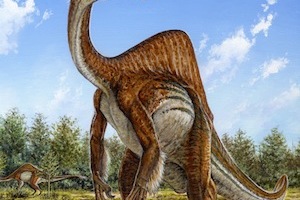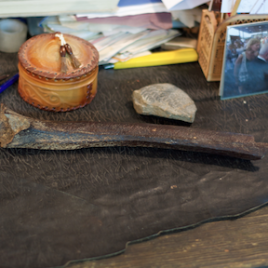
Artist’s impression of Deinocheirus mirificus, the largest of the ornithomimid dinosaurs. New fossils of this species shed light on how it lived and suggest it may have been an omnivore. (Image credit: Michael Skrepnick)
New fossils of a rare dinosaur found in Mongolia shed light on its dietary habits, and may indicate an omnivorous diet. Deinocheirus mirificus was previously known only from two large forelimbs found in the 1960s, and was thought to be the largest of the ornithomimids, a group of dinosaurs that superficially resemble modern ostriches.
The new fossils show it had features not seen in other ornithomimids, such as an elongated snout and a humped back. While its stomach contents showed fish remains, other features suggested it may also have eaten plants, and could have been adapted for life in a mucky, wet environment such as a riverbank.
Original research paper published in Nature on October 22, 2014.
Names and affiliations of selected authors

